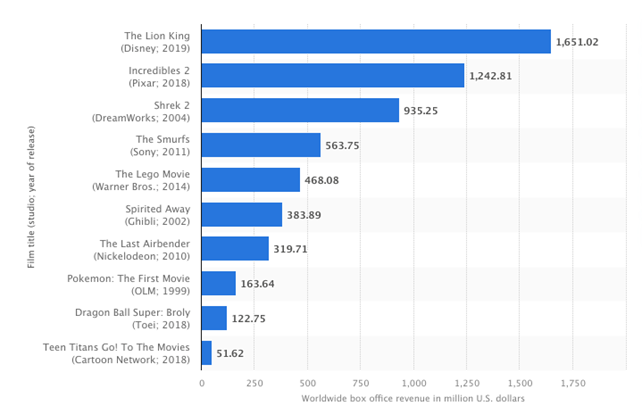Today, I will elaborate a little on what’s at the core of production management: The shooting plan.
Disclaimer: Since my main source for this post is a book written in German, the following information will also be in German. The source can be found below.
Warum mache ich einen Drehplan?
Ein Drehplan ist die Niederschrift aller Faktoren, die während den Dreharbeiten ihren Einfluss entfalten werden – Besetzung, Motive, Crew, Auflösung der Regie, etc. Laut Jesper Petzke, Autor des Buches Drehplanung, ist er ein Dokument, das für fast alle Departments einer Filmproduktion relevant ist. Auf ihm basierend werden einige Entscheidungen wie zum Beispiel das Budget getroffen.
Deshalb ist es von Vorteil, schon so früh wie möglich an einem Drehplan zu arbeiten. Auch wenn dieser noch nicht alle Fragen beantworten kann und sich beinahe täglich ändern wird, ist er eine der wichtigsten Aufgaben von Regieassistenz und Aufnahmeleitung.
Was beinhaltet ein Drehplan?
Ein Drehplan besteht klassischerweise aus sogenannten Stäbchen. Diese sind mit diversen Informationen beschriftet und farblich gekennzeichnet. Hinter der Methode der Stäbchen steht eine Reihe an Erfahrungswerten und die Arbeit ist größtenteils weltweit vereinheitlicht. Was auf den Stäbchen oben ist und wie sie angeordnet werden wäre eine eigene Bachelorarbeit in sich, weshalb ich heute nicht genauer darauf eingehen werde.
Was jedoch noch wichtig ist, ist das weitere Verfahren. Nachdem diese Stäbchen erstellt wurden, müssen sie nämlich in die gewünschte Reihenfolge gebracht werden. Wie man das macht ist unterschiedlich je nachdem ob man analog oder digital arbeitet. Beide Arten haben ihre Vor- und Nachteile. Was aber jedenfalls daraus resultiert ist ein Drehplan, der die Stäbchen in der richtigen Reihenfolge beinhaltet.
Zu guter Letzt muss ein Drehplan auch spezielle Einflüsse wie zum Beispiel das Wetter beinhalten. Nachdem vor allem diese Aspekte im Dokumentarbereich spannend sind, werde ich mich diesen im nächsten Post genauer widmen.
Wie erstelle ich einen Drehplan?
Die Drehplanerstellung zieht sich laut Petzke sehr lange durch diverse Produktionsschritte. Der Startschuss dafür ist allerdings in der Finanzierungsphase. Hier entsteht ein sogenannter Kalkulationsdrehplan. Dieser unterstützt die darauffolgenden Überlegungen zum Budget.
[…] man kann sich das bildlich vorstellen wie einen Kuchenteig, der zum ersten Mal ausgerollt wird und von dem niemand weiß, für wie viele Kekse er ausreicht.
Jesper Petzke
Dieser Kalkulationsdrehplan ist allerdings nicht die Version, mit der Regieassistenz und Aufnahmeleitung dann weiterarbeiten. Laut Petzke beginnen die meisten Teams bei der Erstellung des tatsächlichen Drehplans wieder bei null. Er beschreibt diese neue Erstellung in mehreren Schritten:
- Chronologie
Die Chronologie beschreibt den Prozess, die Stäbchen, aus denen die Planung besteht, in die Reihenfolge laut Drehbuch zu bringen. Das hilft allen am Set, während stressigen Zeiten den Überblick über den Drehbuchablauf zu behalten und wichtige Informationen hinaus zu lesen. - Motive
Der zweite Schritt ist eine Clusterung aller Stäbchen in einzelne Motive. Diese werden anschließend auf die Drehorte verteilt, an denen sie abgedreht werden. So erlangt man schon eine grobe Struktur für die darauf folgende, genauere Drehplanung. - Pensenbildung
In Schritt drei werden die Motive in sogenannte Pensen eingeteilt (Pensen ist die Mehrzahl von Pensum, hab ich auch nicht gewusst). Hier gibt es wieder mehrere Faktoren, die die Pensenbildung beeinflussen, jedoch den heutigen Rahmen sprengen würden. Kurz: Man versucht, die Motive in Tagespensen zu unterteilen. Kommt man dann drauf, dass die Gesamtanzahl der Pensen (also der Tage) nicht dem geplanten Produktionsaufwand entsprechen, muss gekürzt oder mit anderen Departments verhandelt werden. - Kalender
Nachdem die Pensen feststehen, erstellt man den tatsächlichen Drehkalender. Dieser muss den rechtlichen Anforderungen entsprechen und orientiert sich klassischerweise an einer Mo-Fr Woche mit dem darauffolgenden Wochenende. In der ersten Drehwoche ist es wichtig, einen Tag für den Aufbau bzw. eventuelle Anpassungen einzuplanen. Bei einem Ortswechsel werden ebenfalls ein oder mehrere Tage zum Auf- und Abbau eingeplant. Spezielle Drehtage, die zum Beispiel an einem Wochenende sein müssen, verlangen eine anschließende Anpassung der restlichen Drehtage. Der Kalender muss auch Informationen zu Sonnenauf- und Untergang beinhalten. - Verteilung der Pensen
In diesem Schritt werden die Pensen in den fertigen Drehkalender eingefügt. Dieser Schritt nimmt oft die meiste Zeit der Drehplanerstellung in Anspruch, da man jetzt erst merkt, wie gut die Arbeitsschritte davor ausgeführt wurden. Die Verteilung der Pensen endet mit dem finalen Drehplan. In seinem Buch schreibt Jesper Petzke abschließend über diesen Schritt: “Es gibt dabei nicht die eine Lösung, sondern immer nur Näherungswerte – das Limit ist der eigene Anspruch.” - Optionen einbauen
Im vorletzten Schritt geht es darum, alle Eventualitäten in alternativen Drehplänen abzubilden. Das erfordert lösungsorientiertes Denken und präzise Planung der Alternativen. Wenn man an einem Kalkulationsdrehplan arbeitet, ist die Arbeit an dieser Stelle beendet. - Überprüfung und Aktualisierung
Mit allen Abteilungen wird hier der Drehplan entweder besprochen, oder es werden Feedbacks gesammelt. Ein guter Drehplan wandelt sich ständig und passt sich kontinuierlich an neue Anforderungen an. Deshalb ist die Arbeit am Drehplan auch erst mit dem letzten Drehtag beendet.
As we see, working on a shooting schedule not only requires precision, but also dedication and time. Of course, the work on this part of the production needs to be scaled according to the size of the project. I am looking forward to learning more about shooting plans in documentary filmmaking in my next post.
.
.
.
Sources
Petzke, Jesper: Drehplanung. Konstanz: UVK Verlag 2015

















